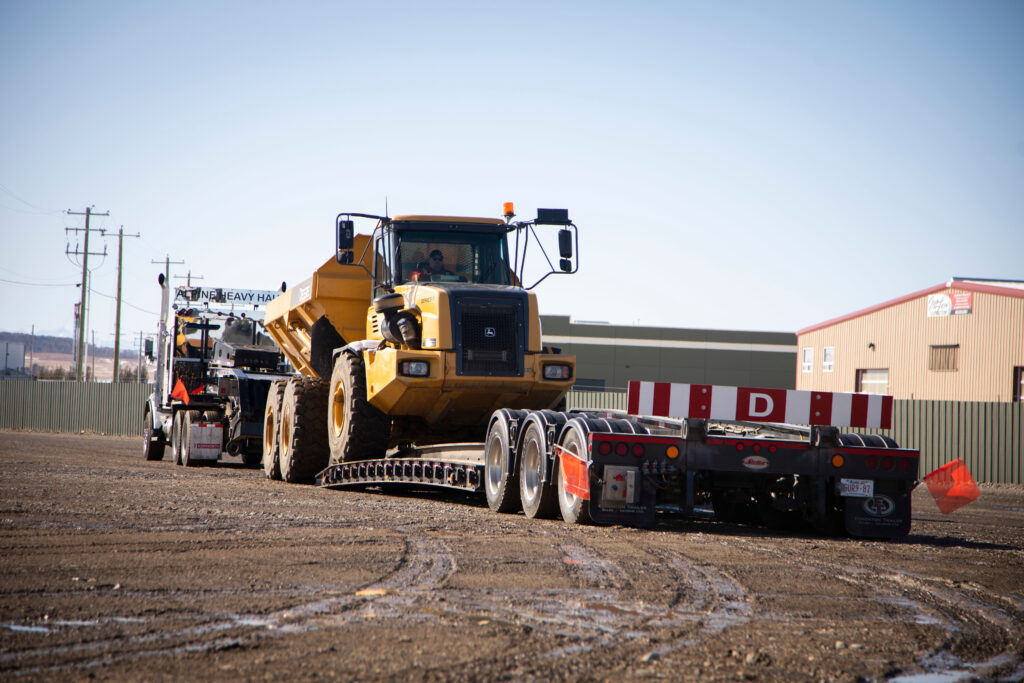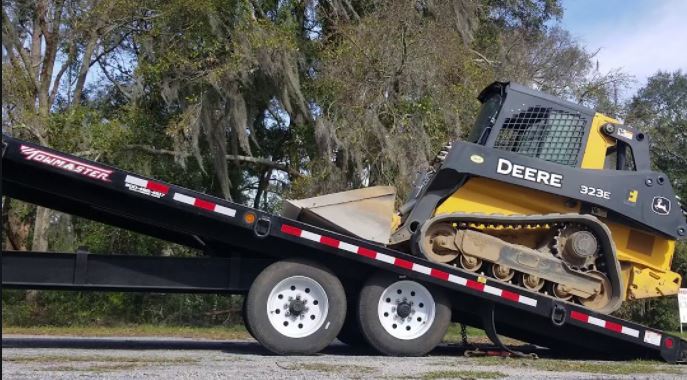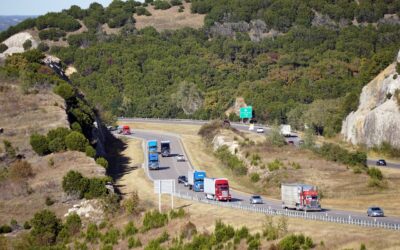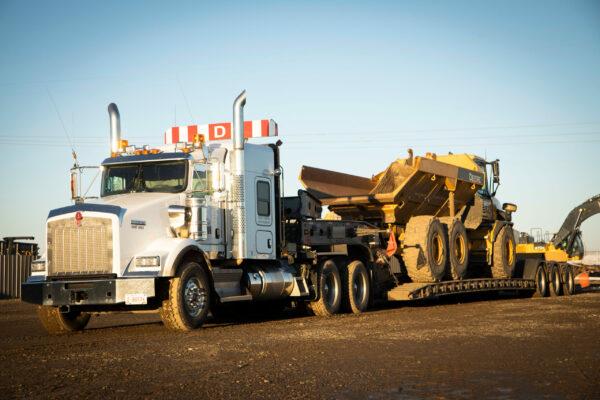7 Rules of Heavy Load Securement in Alberta
Hauling heavy loads can be dangerous or hazardous when not handled correctly. This is why the best option for heavy haul transport is to hire someone with experience. Professional heavy haulers who have transported all types of equipment, from construction equipment to forestry machinery to farm equipment, know the ins and outs of safe loading. Most importantly, they know the rules around load securement to ensure your load is shipped securely.
Equipment that is shipped across provincial and international borders to the United States is subject to regional road safety and securement rules which are designed to protect roadways and infrastructure, as well as to ensure public safety. Special equipment, such as a wind turbine, falls under the category of a super load. This requires a special transportation permit, as it exceeds the dimensions of the province’s normal limits.
For these important safety reasons, we recommend hiring a professional driver with the knowledge and expertise to secure your equipment properly. They will follow various procedures to ensure your equipment is securely loaded and transported safely to its destination. Wondering where to find such a driver? Trusted Dispatch’s network of fully-vetted, professional owner-operators has the experience and skill to haul your heavy load while following the rules listed in this article every time.
1. Choosing the Right Trailer for the Job
The type of trailer that will be used to transport your equipment is dependent on the weight and dimensions of your load.
Transporting Heavy Loads
In order to move heavy, oversized loads, your driver will likely use a removable gooseneck trailer. These trailers have the ability to carry weights of up to 150,000 lbs by using additional axles to accommodate the extreme weight.
Transporting Taller Loads
For taller equipment, a driver may employ a double drop trailer. These trailers are ideal for loads up to 11.5 ft and weights up to 80,000 lbs. For heavier loads of up to 150,000 lbs, the removable gooseneck trailer is better suited and can hold equipment up to 12ft in height. In addition, taller loads may require the use of pole cars to assess for any hazards, such as bridges or overpasses, that may pose a height restriction.
In all cases, when you ship with Trusted Dispatch, your trained driver has the expertise to determine the type of trailer that will be required to move your heavy equipment.
2. Loading and Unloading on Even Ground
When it comes to loading and unloading heavy equipment, it is vitally important to work on an even surface that is large enough to accommodate the truck, trailer, and load comfortably. Working on uneven ground poses a serious hazard that may cause your equipment, including the truck and trailer, to topple over. Avoidable accidents such as this can cause injury to the driver and seriously damage the equipment.
3. Ensure All Brakes are Engaged
This may seem like an obvious point, but in the midst of the moment, it’s possible to be side-tracked and forget to engage the truck’s brakes. Experienced drivers run their own safety checklists and will ensure that the brakes on the truck and the trailer are fully engaged before loading. This step is necessary in order to prevent it from shifting during the loading and unloading process. This is an essential safety procedure to protect people in the vicinity as well as the equipment.
4. Lining Up the Load
When loading the machine onto the trailer, it is important to ensure that tracks or tires come up evenly onto the ramp so that the equipment is loaded straight onto the trailer. Coming onto the trailer even at a slight angle might result in the machine falling off the trailer, injuring the driver, and damaging the equipment. Correcting the path of the machine before mounting the ramp very slowly is essential.
5. Securing the Machine
Once the machine is loaded onto the trailer, it’s important to secure the machine. It’s a good idea to remove your personal belongings from the machine before driving or loading them onto the trailer. Once the machine is in position, your driver will take measures to secure the load. This involves more than chaining down the heavy machine. It also includes covering the windshields and other more fragile parts. Your driver will also ensure that all doors are latched to prevent anything from swinging open during transit. They’ll also engage the brake to prevent the machine from moving while on the road.
6. Chain Size and Placement
Cleaning your equipment prior to pick-up is helpful because it will allow the driver to easily identify the tie-down points so they can be secured to the trailer. Specific points on the equipment must be secured as a matter of law and are commonly located at the four corners of the machine, with additional tie-down requirements for accessory equipment such as backhoes or front loaders.
The chain size and grade depend on the weight of the load transported. The combination of chains should support no less than 50% of the weight of the machine in order to comply with regulations and ensure safety.
Strapping a basic chain across your machine is usually not enough. You are required to have an adjustable chain or rachet system to tighten the chain into position. Tie-down mechanisms have a tendency to shift and stretch during transit. Regular checks will ensure the chains can be easily tightened when needed.
7. Driving Away
When the heavy equipment is securely tied down to the trailer, the truck driver will test the securement system by driving off slowly and then stopping and checking to see that there are no problems or concerns with the load securement. Drivers must also obey additional load checks starting with a check-in after the first 80 km of the trip and then again after every 3 hours or 150 km of travel.

Best Heavy Haul Company in Alberta
If you are looking for reliable heavy-haul trucking services, contact Trusted Dispatch. You can easily find a driver on our load board to transport your heavy equipment safely and securely to any destination across North America. Use our heavy equipment shipping calculator to get your free quote instantly, and you’ll get connected to our network of professional heavy haulers.





